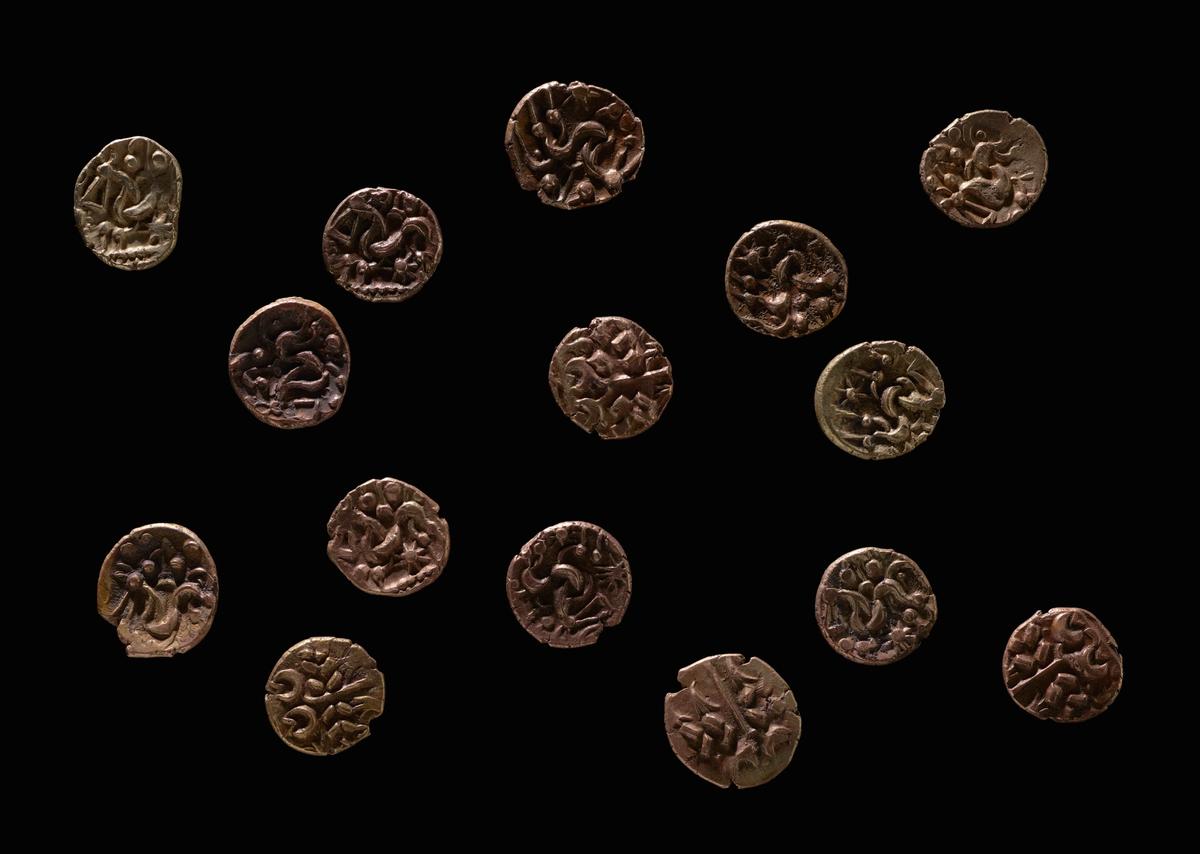A haul of gold coins discovered in North Wales—the first hoard of Iron Age gold coins ever found in the country—have been officially declared as treasure by a Welsh local government official.
The coins were discovered by the metal detectorists Peter Cockton, Lloyd Roberts and Tim Watson on different occasions in a field in Llangoed on the isle of Anglesey (between July 2021 and March 2022). Kate Robertson, the senior coroner for North West Wales, told an inquest in Caernarfon this week that the pieces can be classed as treasure.
“I’d been over this field a few times and not found much of interest, and then one evening literally struck gold! I rushed home to show my wife and we were both in awe of this coin, which was like nothing else I had found, immaculately preserved with such unusual stylised images,” Watson says in a statement.
The coins show the bust of Apollo on the obverse (heads side) and a two-horsed chariot and charioteer on the reverse (tails side). “The obverse of these staters shows Apollo’s wreath and hair, while the reverse shows a stylised triangular-headed horse with various symbols surrounding it,” says a statement from the national museum, Amgueddfa Cymru-Museum Wales.
The coins were struck between 60BC and 20BC at three different mints across what is now Lincolnshire, England. They have been attributed to the Corieltavi tribe, who inhabited the geographical area of the modern East Midlands during the late Iron Age.
Sean Derby, the historic environment record archaeologist at Gwynedd Archaeological Trust, visited the discovery location, observing that the findspot lies in an area of known prehistoric and early Roman activity. But the objects were not thought to have been used as currency but as “gifts between elites”, say experts at Amgueddfa Cymru-Museum Wales.
The coins were handed to the Portable Antiquities Scheme (PAS Cymru), an initiative run by the British Museum and Amgueddfa Cymru-Museum Wales encouraging members of the public to record archaeological discoveries. The items were transferred to Amgueddfa Cymru-Museum Wales in October 2021.
The rare haul may be acquired by Oriel Môn museum in Llangefni, Anglesey. “The coins are of national importance and we are excited about acquiring them for Anglesey’s museum collection and to put them on public display,” says Ian Jones, the building and collections Manager at Oriel Môn in a statement.


